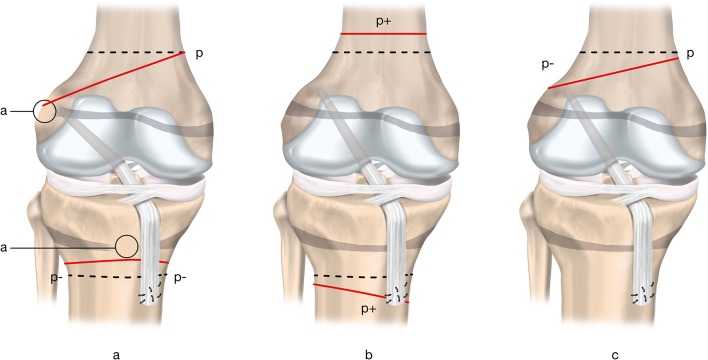Figure 9.
Three growth disturbances that may occur following ACL reconstruction. ‘p’ represents the physiological growth process; dashed lines represent the physiological growth arrest lines; continuous lines represent the observed pathological growth arrest line. Type A (arrest): growth arrest process (a) occurs after a localised injury to the physis and results in a bone bridge across the physis. The extent of deformity is proportional to the location and size of the initial physeal injury. Type B (boost): overgrowth process (indicated by p+) is probably caused by local hypervascularisation, stimulating the open physis (b). This growth disturbance is temporary and usually becomes apparent in a limited period of 2 years following ACL reconstruction. It primarily leads to leg length discrepancy. Type C (decelerate): undergrowth process (indicated by p–) due to a tenoepiphysiodesis effect (c). The graft tension across the open physis causes the deformity. Adapted from Chotel et al.86

